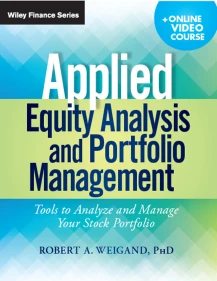Momentum Trading Moves Markets
Posted by Rob Weigand. Let’s think about last Friday’s absurd 3.25% drop in U.S. stock markets. Markets were allegedly spooked by:
1.) a sharp rise in unemployment — to 5.5%, only 0.5% above the traditional definition of “full employment”;
2.) comments from Israel that a military strike against Iran’s nuclear facilities was inevitable; and
3.) a large increase in the price of oil . . . back to where it was a week ago.
Are we supposed to believe that the market was so stunned by these events — events one would think were not all that difficult to anticipate — that stock values had to drop by 3.25%? Actually, no.
What we’re witnessing, with yesterday’s market mania of +1.5% and today’s market depression of -3.25%, is the result of what’s known as momentum trading. When the idea of a momentum trade is forming in a trader’s head it sounds something like this: “Stocks are going up (down) today; I think I’ll buy (sell) some, too.”
You may have noticed that, in the last year in particular, markets have had a strong tendency to start out in one direction (positive or negative) and continue in that direction all day, whether up or down. This tells us that momentum trading has been particularly popular over the past year. In the face of all the volatility and uncertainty, and with bubbles popping faster than a bag of Orville Redenbacher in a high-powered microwave, this is what we pay our investment advisors to do — think deep thoughts like “I think I’ll do what everyone else is doing today. And tomorrow. And the next day. And again and again, as long as these supersized paychecks keep coming.”
I’m curious how others view momentum trading. Do you think this is what professional investors pitch to pensions and endowments when they’re trying to get new assets under management? Pension: So, tell us about your best strategy for beating the market. Manager: Well, when the market appears to be running strongly in a certain direction, we try to time some short-term trades to get in and out before the trend reverses. (Note that market timing, or strategic exposure to beta-returns, does measure as alpha, or active outperformance.)
Maybe it’s just me, but I don’t think too many conversations like that actually take place. But somebody is buying and selling all these stocks and contributing to all that momentum. Trying to earn alpha. In a way they probably don’t want to explain to clients.
I’m looking for a moderate rebound in U.S. equities, as early as Monday June 9, but certainly by the end of the week. Unless oil really does go all the way to $150 a barrel. Then, it’s time to duck and cover.
You can write to write to Rob Weigand at profweigand@yahoo.com or find him on the web at Rob Weigand’s Home Page.


Between all of the practice sessions, qualifying and racing, the vast
majority of your time will be spent massaging the dual shock’s triggers.
connected but in actual it is wriggled around and the cable is not seating in. Since 1990, EA (FIFA) and Konami (PES)
have been battling for the front seat in football
games.